Landscaping with flowers – 10 ways to create a blooming beautiful garden plot
Learn how to start landscaping with flowers with these expert-approved ideas from gardening pros and designers

Landscaping with flowers can help add interest, scent and color to your outdoors. Flowers are having a bit of a moment and our love for introducing these beautiful blooms just about anywhere around our homes shows no sign of slowing down.
So, with spring in full force, why not try some of these flower bed ideas and container gardening tips in your outdoor space? According to garden expert Rob Brett from the Royal Horticultural Society, pretty much any garden, courtyard, rooftop or balcony can be landscaped with flowers. He says, ‘So long as you choose the right plant for the right place, then yes, absolutely. Flowers add structure, style and scent to gardens of all shapes or sizes, be it an urban courtyard, a vast meadow or a window box.’
The only word of caution? Just remember to choose your blooms wisely to ensure you create a garden that has maximum interest all year round – not just seasonally. To help turn your outdoors into a flower haven, we asked garden experts on where to start when it comes to landscaping with flowers, what flowers are best to use and what factors you should keep in mind.
Here's how you can start landscaping with flowers
1. Start with grass
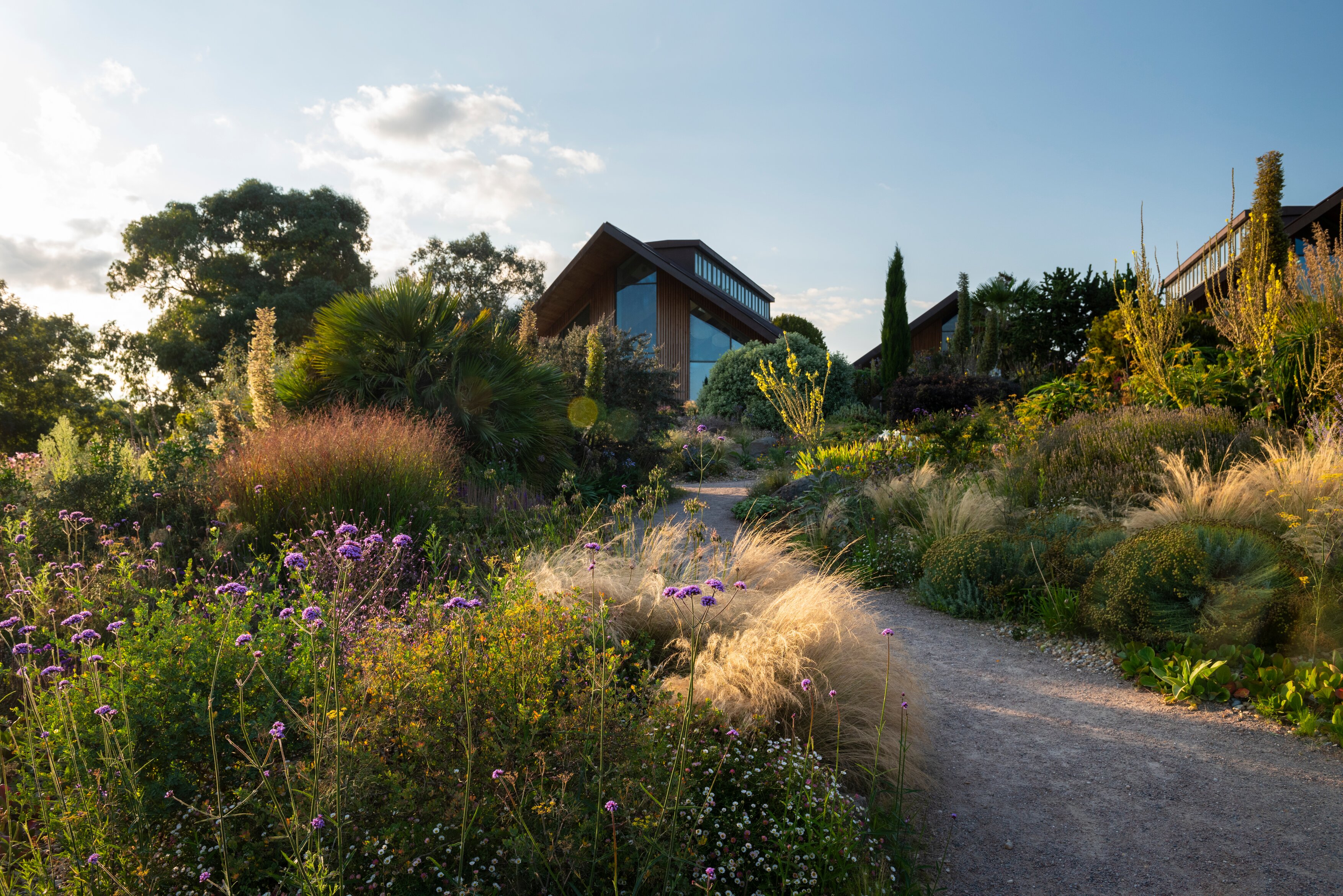
Who knew wild grass could prove so popular? We’ve already seen the return of the feathery plumes as people re-learn how to grow pampas grass. But now there’s new grasses to give a grow too.
But where do you begin? ‘You need to start with grasses first of all,' says Rob Brett, curator at RHS Garden Hyde Hall, Chelmsford. 'There is such a diversity – for example, tall, dwarf, wide – and a range of colors and tones, especially during autumn and winter. A mix of grasses in our dry Garden (an area of the garden that has never been manually watered) works well, becoming a feature of the landscape in its own right.’
Rob’s best pick of grass? ‘I would recommend plants such as Cortaderia, Miscanthus and Stipa,’ he tells us.
2. Use grasses to create a defined line
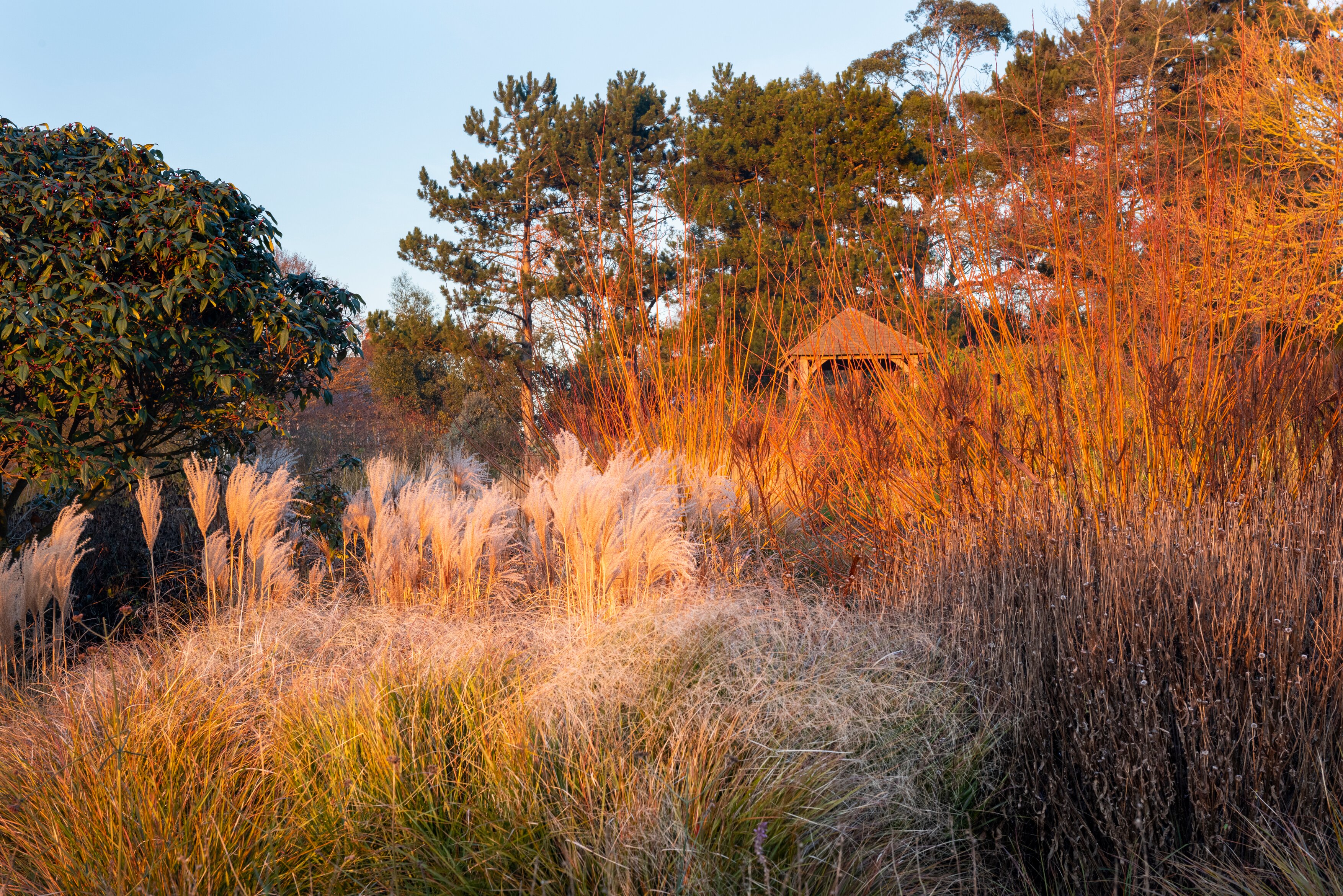
Once you’ve chosen grasses, now it’s time to give some serious consideration to where you might position them. According to Rob, you want to use your grasses to create a defined line to help guide the eye to different areas around your outdoor space and give it some structure.
The Livingetc newsletters are your inside source for what’s shaping interiors now - and what’s next. Discover trend forecasts, smart style ideas, and curated shopping inspiration that brings design to life. Subscribe today and stay ahead of the curve.
R ‘At RHS Garden Hyde Hall we utilize tall structural grasses such as Panicum virgatum ‘Northwind’ in our planting beds, along with herbaceous plantings such as Helenium, Rudbeckia, Echinacea, Phlomis, and shrubs such as roses, viburnums,' explains Rob.
‘In some areas we have also used it to create a defined line, similar to the structure that a small hedge would achieve.’ This is a great idea if you're looking to incorporate some more privacy in your small space.
3. Contrast your shrubs

Variety is the spice of life. And when it comes to plants, the same idea rings true. So contrast your grasses and plants and juxtapose old favorites with newer, more modern styles for a refined look. The same goes for color. Pair more neutral-colored plants with bright and beautiful arrangements.
‘Finally, one of my favorite designs is the use of bulbous material amongst Deschampsia in the Modern Courtyard Garden,' says Rob. 'The way the Dierama and Allium ‘Forelock’ rise through and above the wispy grass has, in my opinion, been a marvel.’
If you’re working with a tiny terrace, compact plot or bijou balcony, some of the best plants for small gardens can be used in the same way.
4. Choose the right plant and the right place
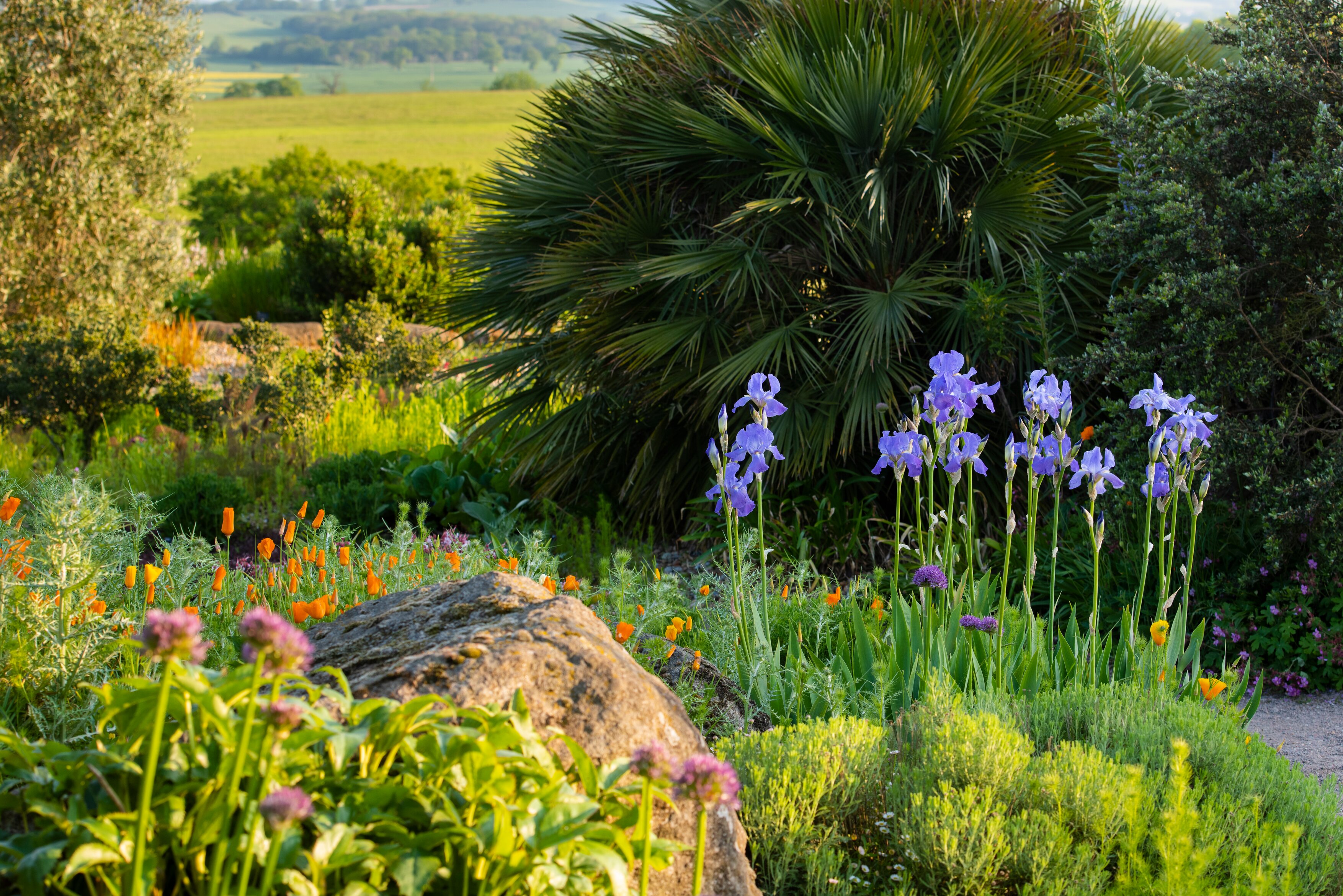
Plants are living things. If given the right conditions, they’ll thrive. But in the wrong surroundings they’ll wilt away without unleashing their true potential.
‘Consider the soil conditions,’ Rob says, ‘along with the aspect and the environment and choose your plant from there.’
If you’ve got a sun-less garden, it’s important to discover the top shady garden ideas to brighten up your shade-stricken space and use plants that love the shade, more so than a hit of vitamin D.
While if your garden is south facing, and therefore enjoys some rays all day long, invest in plants that can stand drier conditions.
5. Incorporate out of the ordinary

Along with being able to give your lawn a revamp, landscaping with flowers also gives you a chance to get creative with your blooms of choice.
‘Ask yourself what feel you are looking for,' Rob says. 'Wandering around public gardens can help provide inspiration. I’m always tempted to look for ways to be a bit unusual, incorporating out of the ordinary elements wherever possible.’
If space allows and your conditions are correct, why not try Fleabane? The hardworking plant tops our list of the five most beautiful flowers to plant right now for more reasons than one. It flowers for nine months of the year and it's a spreader. So dull spots will soon be brought back to life.
While the easy-to-grow exotic-looking flower, agapanthus, deserves a place in any (and every) outdoor space. Just be warned: they need full sun and fertile soil to help them burst into bloom.
For an unpredictable and carefree approach to your planting, try your hand at chaos gardening, the trend that encourages use of any left over seeds lying around for a sustainable landscaping idea.
6. Create cohesion with your choices
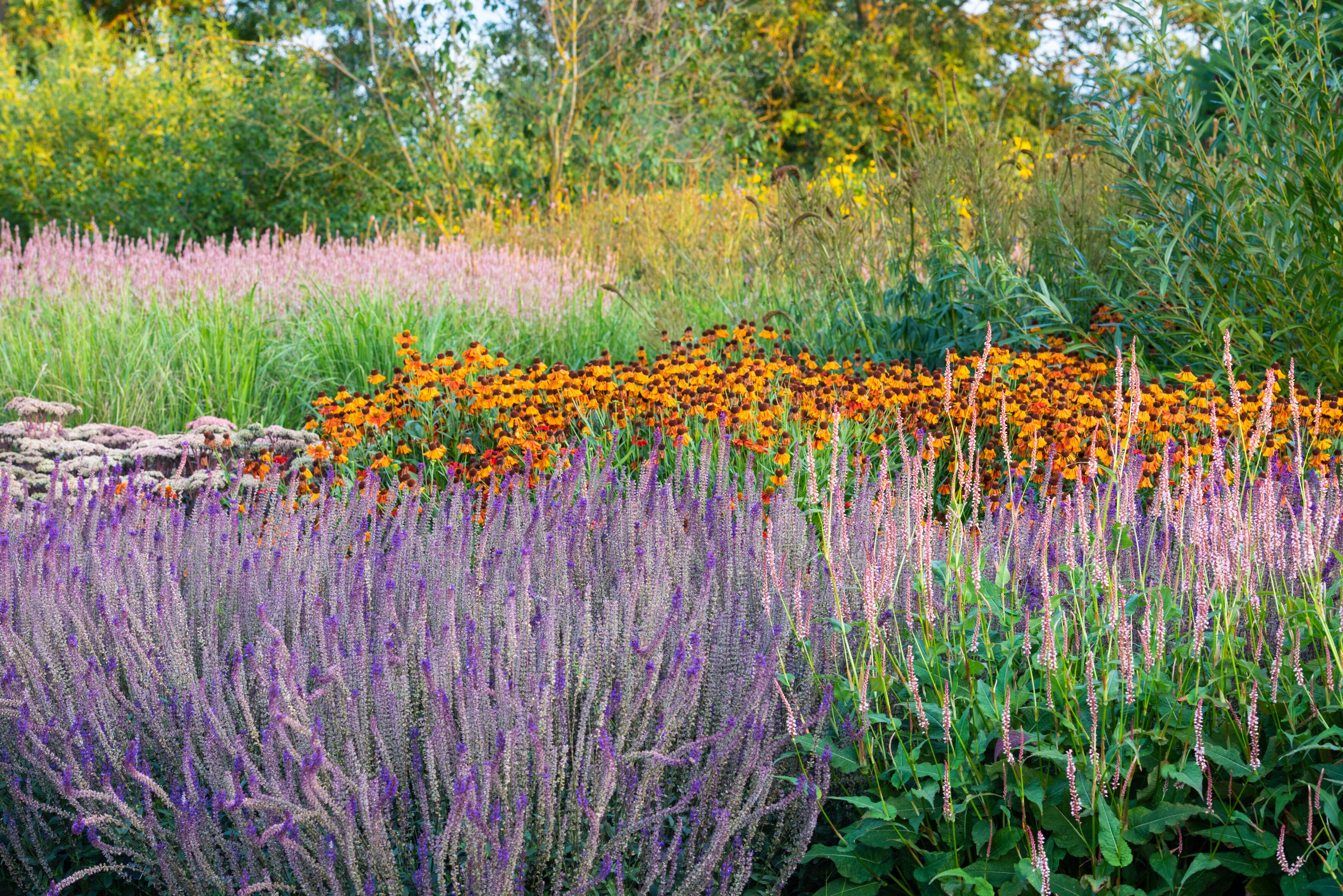
So you’ve picked your plants, checked the conditions are right for planting and chosen florals that are a little out of the ordinary. But how do you create a landscaped garden to be proud of?
One of the easiest and quickest ideas to help add interest without going OTT is to create cohesion. Whether it’s the repetition of shapes, color, height or style of flowers, all of the above helps to guide the eye around the landscape in a cohesive and put-together fashion.
7. Think about the color, height and succession

With more than 350,000 species of plants in the world (and counting), you’re spoilt for choice when it comes to choosing what ones you want in your outdoors.
One way to help you pick and choose your flowers wisely, is to think about what colors you want in your garden along with their height and succession.
‘Flowers are color in front of the texture of the foliage,' says Gardener Jo Thompson, author of soon-to-be-published The Gardener’s Palette. 'So I, first of all, start to think about the seasons in which I want color. I then look at height, and succession of flowers within that season.’
If you pick tall stemmed flowers, like your humble Sunflower or an Oriental lily, consider planting these at the back of your flower bed. Or, if you are planning on growing these in the front, plant them deeper down in the earth so your other flowers can be seen.
8. Add roses for a classic look
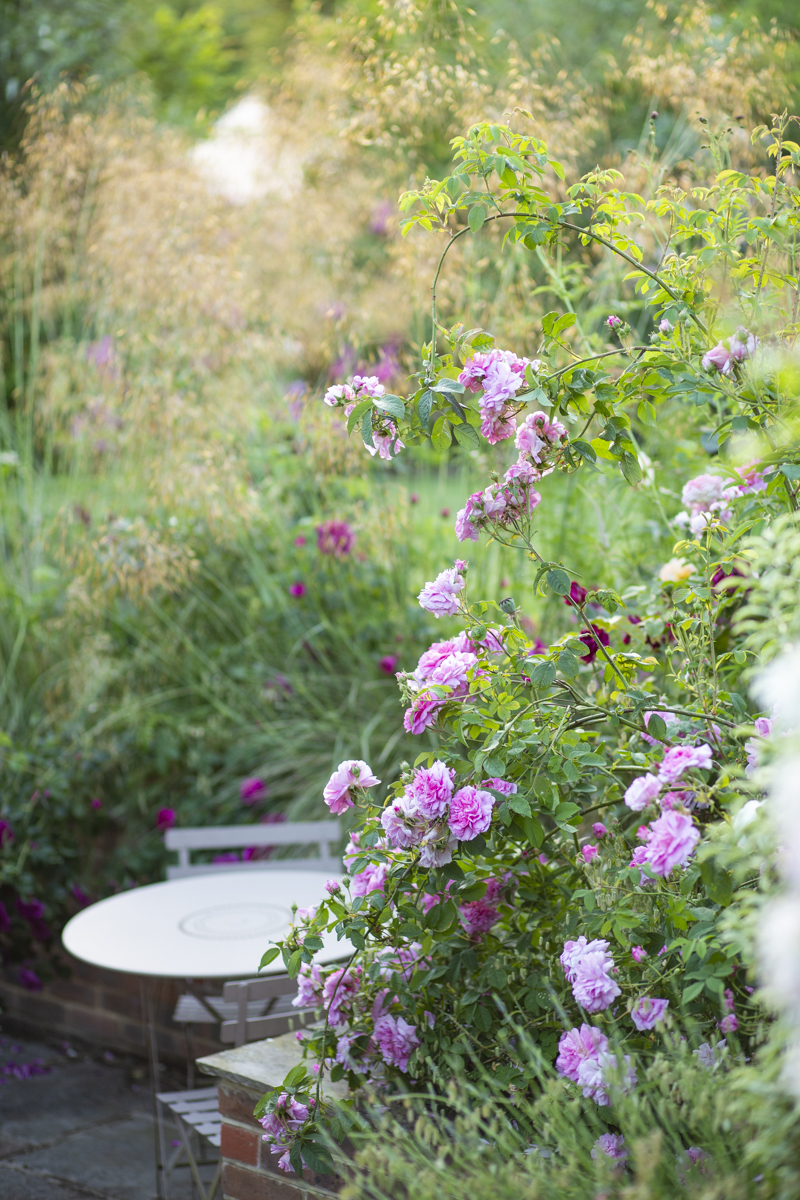
Want a hard-wearing flower to add to your landscape? ‘As a rose lover, I do think there’s a rose for every garden,’ Jo tells us.
And we agree. Resilient, easy to grow and even easier to look after, roses seem to be one of the top flower trends that never go out of fashion. Plus, once they’re in full bloom, why not enjoy the best of both worlds by picking them and bringing them inside?
Jo adds, ‘The simple, single-flowered varieties look wonderful in a natural, more relaxed, even wild setting, whilst the fuller ones look gorgeous in a mixed border. Romantic and usually scented, you can’t go wrong with a rose.’
9. Incorporate planters into your outdoor set-up

When you’re landscaping your garden, you don’t just have to restrict your planting space by planting in your flowerbeds. Think outside the box – especially if your garden involves more hardscaping than softscaping.
Planters or container gardening is a brilliant way to maximize your growth potential.
‘Have lightweight planters full of succession bulbs through the year on a table so that you can really appreciate the tiny spring bulbs from up close, and later feel absolutely surrounded by tulips,' explains Jo. 'Later when the dahlias come, I pot the planters and baskets back on the ground.’
10. Create a pathway
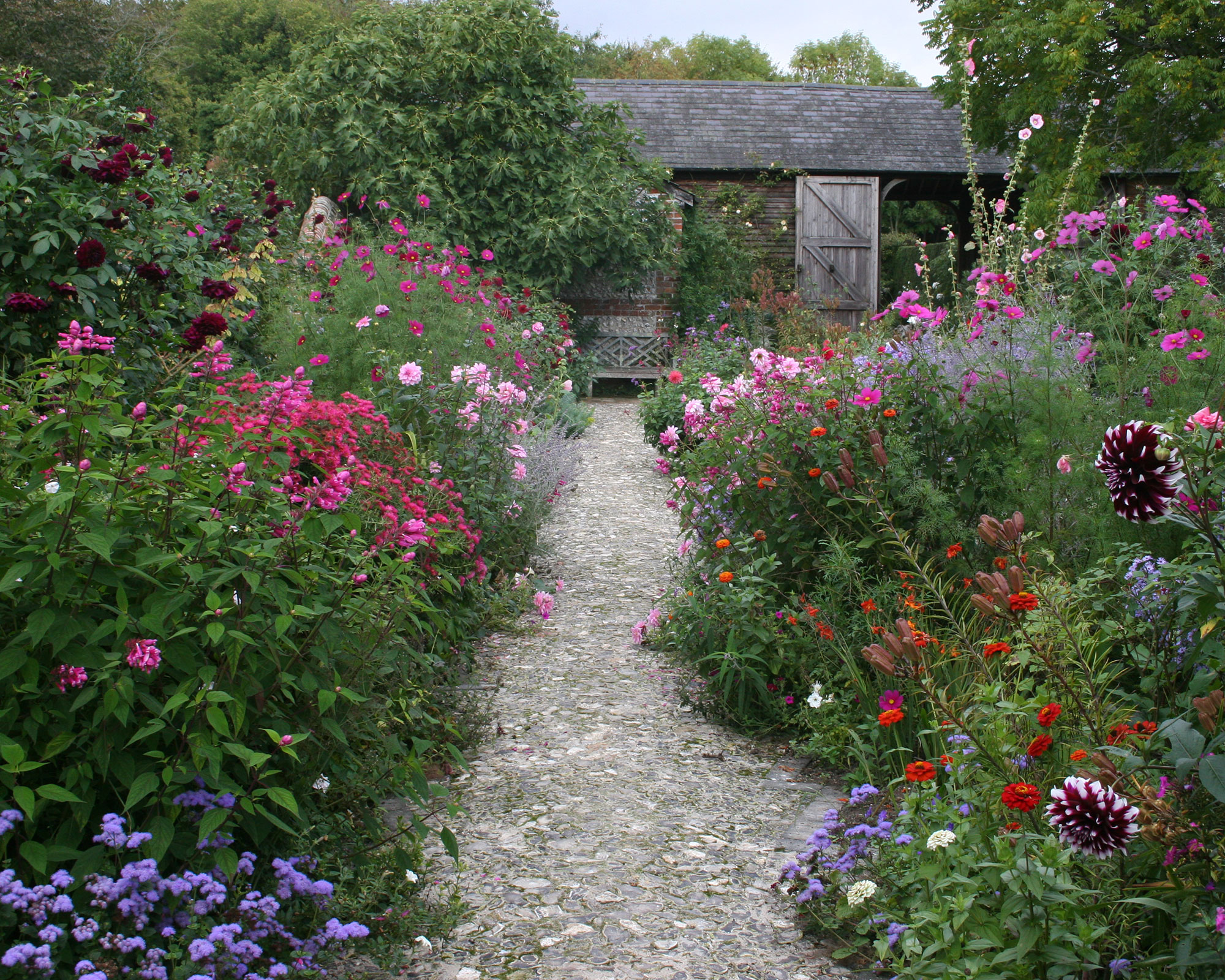
As we've just seen, flowers and tall grasses can act like hedges in your outdoors. But they can also be used as a modern garden idea to border a walkway and create a riot of color to help take you from one area of your garden, to the next.
Perennial flowers (which are flowers that will live for a couple of years) are best suited to most outdoor spots as they can survive through wet winters. However for a fast and fabulous fix, add annuals to the mix to help get a hit of color in your garden instantly.
What flowers look well together?
We'd take our cue from the top flower trends which state that bold hues are in this season. Go for a colorful mix and try pushing the blush petal fashions of recent years to the side.
When planting, one train of thought is to color block. This means planting similar colored blooms next to each other. For example, pink, purple and red are all from the same color family, so would all work well next to each other and would make for an eye-catching scene.
But also remember to plant some wild grass at the back of your borders. This will add structure, and texture and fill in any gaps you have.
However, to make sure you create a calm and collected outdoor space rather than a chaotic one, before taking plants out of their tubs and planting them in the ground, spend some time arranging (and rearranging them) next to each other to make sure they complement one another.
And while it's all well and good to pick plants that look good next to each other, you'll also want to think about how much water and nutrients each of your flowers need. You want to create a balanced ecosystem in which your blooms will thrive.
Becks is a freelance lifestyle writer who works across a number of Future's titles. This includes Real Homes, Top Ten Reviews, Tom's Guide, TechRadar and more. She started her career in print journalism at a local newspaper more than 8 years ago and has since then worked across digital and social media for food, fashion and fitness titles, along with home interior magazines. Her own interior style? She's big on creating mindful spaces in every corner of her home. If it doesn't spark joy or happiness, it has no place here. When she’s not writing, she’s reading and when she’s not reading, she’s writing.